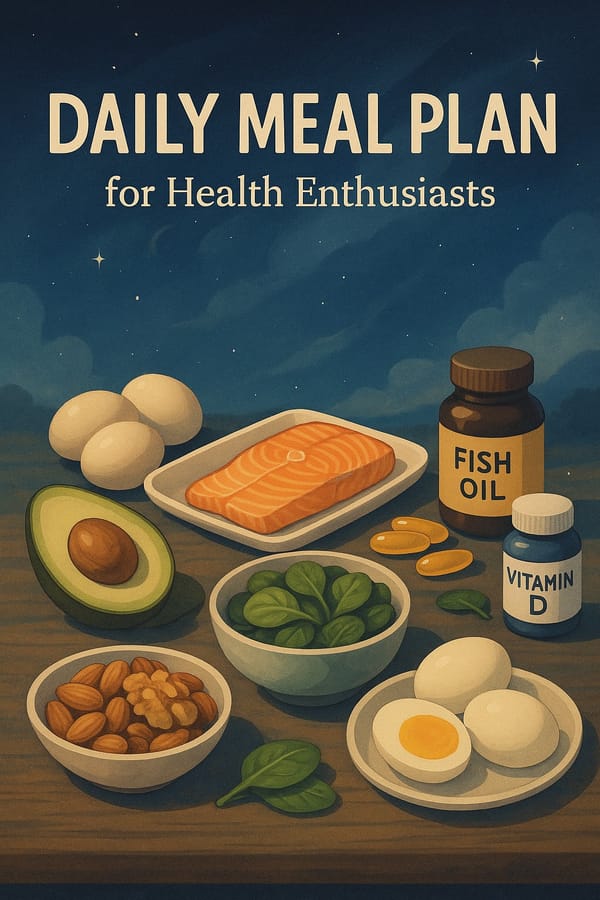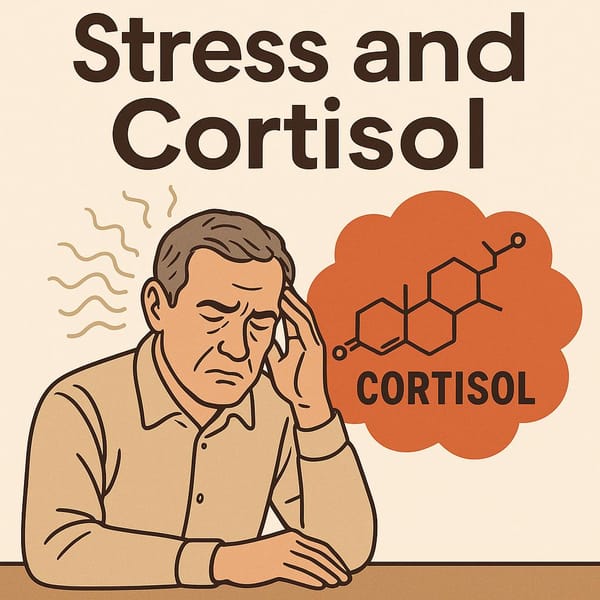Boost Your VO2 Max for a Healthier You: A Comprehensive Guide for the 50+ Age Group
Discover the importance of VO2 Max and learn evidence-based workout tips to enhance oxygen utilization and maintain overall health for individuals aged 50 and beyond.

Introduction
As we step into our 50s and beyond, our bodies naturally undergo several changes: muscle mass gradually declines, fatigue becomes more common, and there is an increased risk of chronic conditions like cardiovascular disease or diabetes. Taking care of your overall health becomes more vital than ever. One effective way to measure and improve fitness levels is through VO2 Max (maximal oxygen uptake), a key indicator of how effectively your body uses oxygen during high-intensity exercise. The higher your VO2 Max, the better your body can transport and utilize oxygen to power muscle activity. This ties closely to heart rate, blood circulation, and cardiovascular health.
In this article, we will explore all you need to know about VO2 Max—its definition, significance, and practical tips for improving it, especially for those over 50. We will also delve into various exercise methods, nutrition strategies, and relevant scientific research.
What Is VO2 Max?
VO2 Max indicates your cardiorespiratory fitness level, measured by the maximum volume of oxygen (in milliliters) your body can use per minute per kilogram of body weight (mL/kg/min). It can also be specified as mL/min. The term breaks down as follows:
- V stands for Volume
- O2 is Oxygen
- Max denotes Maximum
A high VO2 Max means your body is more efficient at converting oxygen into ATP (energy) through aerobic metabolism. This efficiency correlates with better muscular endurance, daily activity capacity, lower risk of chronic diseases, and overall quality of life.
Why Is VO2 Max Important for Older Adults (50+)?
For those over 50, maintaining cardiovascular health is crucial, as aging often comes with increased risks for heart disease, high blood pressure, elevated cholesterol, and more. Additionally, the body’s metabolic rate may slow down, leading to higher chances of weight gain or obesity.
VO2 Max serves as a 'window' into your cardiovascular health and overall fitness. When your VO2 Max is high, you can exercise for longer, experience better muscle endurance, and reduce the likelihood of chronic diseases. It may also positively influence mental health, as exercise encourages the release of mood-boosting neurotransmitters like endorphins.
Factors Affecting VO2 Max
Improving VO2 Max is influenced by more than just exercise routines. Multiple factors come into play:
- Genetics: Some studies suggest that genetics can predispose certain individuals to higher or more quickly improved VO2 Max values. However, consistent training can still significantly boost VO2 Max for most people.
- Age: As we age, our maximum heart rate and lung capacity typically decrease, which can lower VO2 Max by about 1% per year after 30-40 years of age.
- Gender: On average, men have slightly higher VO2 Max values than women due to greater hemoglobin levels and lean muscle mass. Nevertheless, appropriate training can help narrow the gap.
- Training Level: Individuals who engage in regular aerobic exercise generally have higher VO2 Max values than their sedentary counterparts.
- Overall Health: Chronic conditions like heart disease, diabetes, or obesity can suppress VO2 Max when compared to healthy individuals.
Exercise Routines to Increase VO2 Max
Effective VO2 Max improvement typically involves exercises that target cardiovascular endurance and efficiency. Below are several training methods:
1. High-Intensity Interval Training (HIIT)
HIIT alternates short bursts of high-intensity exercise with rest or low-intensity intervals. For beginners, especially those aged 50 and above, start with moderate intervals:
- Jog or walk briskly for 20 seconds
- Recover by walking slowly for 40 seconds
- Repeat for 6-8 rounds (adjust to your fitness level)
A University of New Mexico study found that HIIT can enhance VO2 Max by as much as 10-15% within 8-12 weeks if performed 2-3 times a week.
Why HIIT is beneficial:
- Stimulates your heart to work near its maximum capacity
- Increases oxygen utilization and energy production efficiency
- Builds both strength and endurance simultaneously
Caution:
- Consult a doctor before starting HIIT if you have heart conditions
- Warm up (5-10 minutes) beforehand
2. Moderate- to Vigorous-Intensity Continuous Training
Continuous Training involves maintaining a steady level of moderate or vigorous intensity (e.g., jogging, cycling) for 30-60 minutes.
- A Medicine & Science in Sports & Exercise journal study showed that exercising continuously at 60-75% of your maximum heart rate can significantly boost VO2 Max.
- For older adults, begin with 20-30 minutes and gradually extend time and intensity as your fitness improves.
Benefits:
- Easy to incorporate into daily routines
- Ideal for building base endurance
3. Cross Training
Cross Training involves mixing various forms of exercise, helping prevent muscular adaptation and boredom while reducing the risk of overuse injuries.
- Examples: Walk/run one day, swim another day, and use an elliptical or stationary bike on another.
- Research from the American Council on Exercise (ACE) indicates cross training at moderate-to-vigorous intensity 2-3 times per week can steadily enhance VO2 Max.
4. Aerobic-Strength Circuit Training
Circuit Training combines aerobic and resistance exercises in multiple stations, each lasting 30-60 seconds, such as running on a treadmill, cycling, or lifting light dumbbells.
- Switching stations keeps the heart rate elevated
- Integrates aerobic and muscular endurance
5. Brisk Walking and Stair Climbing
Though seemingly basic, brisk walking and stair climbing are safe, accessible options for older adults. Regular brisk walking for 30 minutes can substantially lower heart disease risk, while sustained moderate intensity can improve VO2 Max over time.
Nutrition to Support VO2 Max
Alongside training, nutrition is crucial for optimal VO2 Max gains, as ATP production relies on balanced macronutrients and micronutrients:
- Complex Carbohydrates: Brown rice, whole-wheat bread, and oats provide essential energy.
- High-Quality Protein: Sources like fish, chicken, eggs, and beans aid muscle repair and growth.
- Healthy Fats: Olive oil, avocados, and nuts help manage LDL cholesterol and support heart health.
- Vitamins and Minerals: Include B vitamins, vitamin D, vitamin C, iron, and magnesium for metabolism and muscle function.
- Stay Hydrated: Even a 1-2% decrease in body fluids can negatively affect exercise performance.
Notable Scientific Research
Numerous studies over the past few decades have examined the link between exercise, VO2 Max, and chronic disease risk:
- The Journal of Physiology:
- Found that HIIT can significantly elevate VO2 Max in older adults within 6-8 weeks, while improving vascular function.
- European Journal of Preventive Cardiology:
- Suggests that every 1 mL/kg/min increment in VO2 Max can reduce the risk of cardiovascular mortality by about 9%.
- American College of Sports Medicine (ACSM):
- Recommends at least 150 minutes of moderate or 75 minutes of vigorous aerobic exercise per week to maintain or improve VO2 Max in older adults.
- Medicine & Science in Sports & Exercise:
- Indicates that cross training can be nearly as effective as continuous training for improving VO2 Max while decreasing the likelihood of injuries.
How to Measure and Track Your VO2 Max
If you wish to monitor your VO2 Max, here are a few methods:
- Laboratory Tests:
- Uses treadmills or cycle ergometers to collect real-time oxygen and carbon dioxide data.
- Provides the most accurate results but can be costly and less accessible.
- Field Tests:
- Common examples include the 1.5-mile run (Cooper Test) or other timed run/walk tests, followed by specific formulas.
- While not as precise, these are affordable and easy to perform.
- Wearable Devices:
- Many smartwatches offer estimated VO2 Max readings, allowing you to track your progress over time.
Conclusion and Precautions
VO2 Max is a powerful indicator of your aerobic capacity and heart health, closely tied to the risk of chronic diseases. For adults aged 50 and above, maintaining or improving VO2 Max is an essential part of a comprehensive health strategy.
- Choose suitable workouts: Whether it’s HIIT, continuous training, or cross training, adjust intensity and duration based on your fitness level.
- Adopt a balanced diet: Focus on complex carbs, high-quality protein, healthy fats, and essential micronutrients.
- Track progress: Use field tests or wearable devices to monitor improvements.
- Consult professionals: If you have existing health conditions, talk to a physician or certified trainer before starting any rigorous program.
- Warm-up and Cool-down: Properly prepare and recover your body to reduce injury risk.
References
- Weston, K. S., Wisløff, U., & Coombes, J. S. (2014). High-intensity interval training in patients with lifestyle-induced cardiometabolic disease: a systematic review and meta-analysis. British Journal of Sports Medicine, 48(16), 1227-1234.
- Gibala, M. J., Little, J. P., Macdonald, M. J., & Hawley, J. A. (2012). Physiological adaptations to low-volume, high-intensity interval training in health and disease. The Journal of Physiology, 590(5), 1077-1084.
- Ross, R., Blair, S. N., De Lanny, T. (2015). Changes in waist circumference and health outcomes in overweight and obese individuals enrolled in weight loss interventions: a systematic review. The Lancet, 2(2), 179-188.
- Garber, C. E., et al. (2011). Quantity and quality of exercise for developing and maintaining cardiorespiratory, musculoskeletal, and neuromotor fitness in apparently healthy adults: guidance for prescribing exercise. Medicine & Science in Sports & Exercise, 43(7), 1334-1359.
- American College of Sports Medicine. (2021). ACSM’s Guidelines for Exercise Testing and Prescription.
- American Heart Association. (2020). Cardiorespiratory Fitness in Cardiovascular Care.
- Cooper, K. H. (1968). A means of assessing maximal oxygen intake. JAMA, 203(3), 201-204.
- World Health Organization. (2020). Physical activity. https://www.who.int/news-room/fact-sheets/detail/physical-activity
Author’s Note:
- This article is intended for educational purposes and does not constitute medical advice. Readers should consult with a healthcare professional for personalized recommendations.
- For more in-depth and up-to-date information, refer to reputable medical organizations such as the WHO, AHA, or ACSM.
With consistent, well-planned exercise routines and balanced nutrition, boosting VO2 Max in your 50s and beyond is entirely within reach. Besides feeling more energetic, you’ll lower your risk of numerous health conditions and enjoy a better quality of life.



